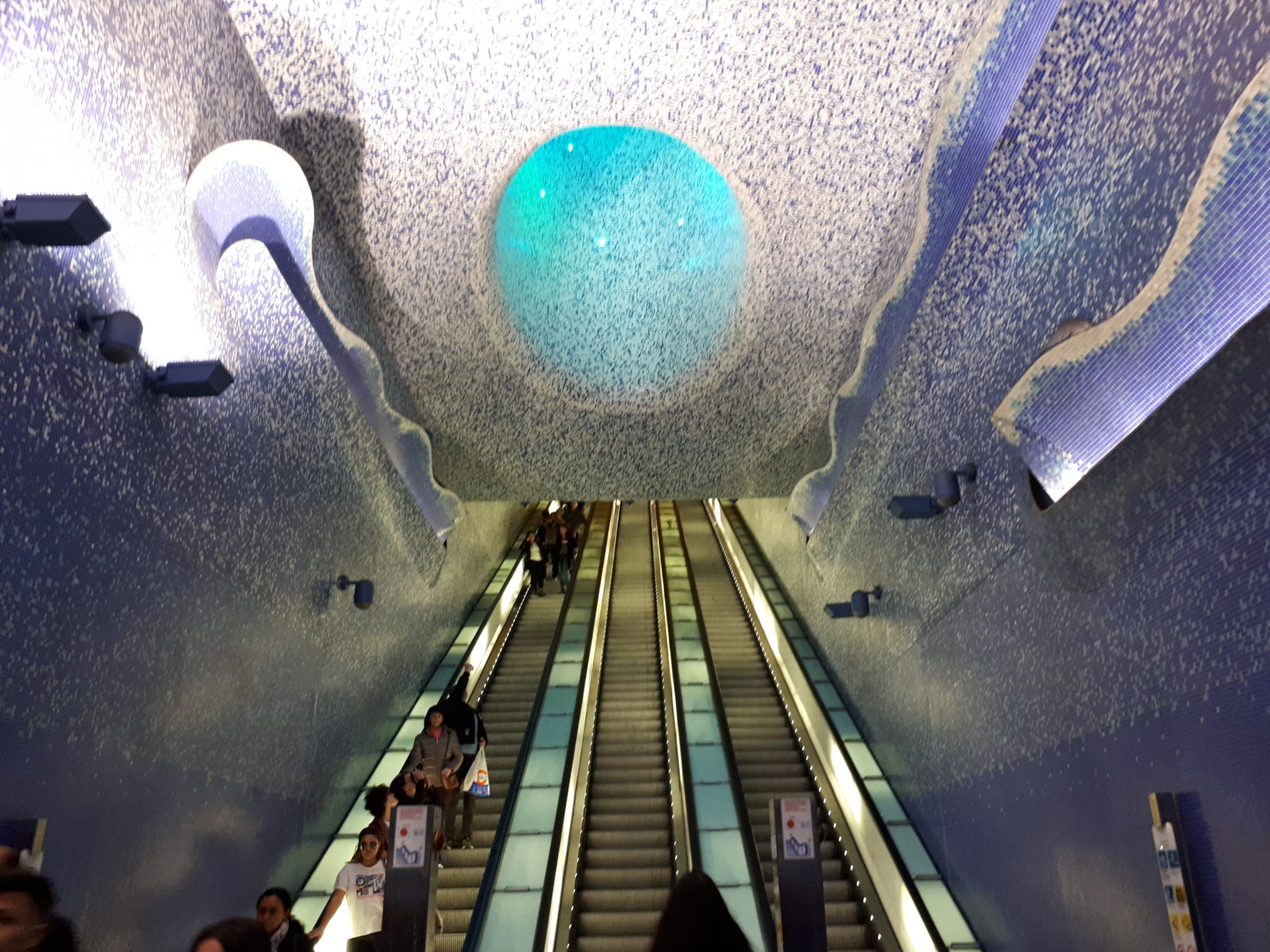
December 1976. I had just returned to live in Naples and an important event happened for the whole city, the opening of the first construction site of the hilly subway in one of the busiest squares on the Vomero hill.
For me, Vomerese by birth and residence, thinking of being able to “go down to Naples”, that is to go to the historic center, without “climbing” on the buses or without having to take one of the funiculars, was a mirage at the time.
And for many years it remained so. Only much later, in December 2002, the section Dante (old town) – Piscinola (hilly area) was completed. And about ten years later, the metro reached the train station. Next stop, Capodichino airport…
The most beautiful (and slowest) metro in the world
In addition to the advantage for chaotic mobility, the metro has also endowed Naples with an invaluable artistic resource. Numerous stations are true works of art, to which various artists and architects have contributed, from Gae Aulenti to Dominique Perrault, from Michelangelo Pistoletto to Mimmo Paladino, to name just a few.
The blue triumph in the Toledo station
Perhaps the most beautiful is that of Toledo, in the heart of the historic centre. Here the descent into the subsoil is a fascinating immersion in the colors of the sea thanks to the work “Relative light” by Robert Wilson. With the installation of thousands of LEDs, it offers passengers suggestive light harmonies in a wide range of blue colours.
But there are many stations not to be missed: Vanvitelli, Quattro Giornate, Salvator Rosa, Materdei, Museo, Dante, Università, Duomo and Garibaldi. Not to mention that the Municipio station, designed by two major Portuguese firms, should become a true underground archaeological museum.
Brief guide to the “underground museum”
Even if users would need more frequent journeys, for contemporary art enthusiasts the Neapolitan subway is therefore an authentic open-air museum. We pass from the amusing installation by Giulio Paolini to Vanvitelli, to the four female figures of the Fighters by Marisa Albanese, a tribute to the heroic page of the Four Days of Naples in 1943 to which the station is dedicated.
To then go down to Salvator Rosa and Materdei, where the Mendini atelier has also worked to enhance the areas close to the metro.
Dozens of artists involved
The hand of Gae Aulenti is recognizable in the museum station, where we are welcomed by a fiberglass cast of the Farnese Hercules. To remind us that we are very close to the National Archaeological Museum, one of the most important in America.
The long mosaic of the “Universe without bombs, kingdom of flowers, 7 red angels” by Nicola De Maria in Piazza Dante is a riot of colours, a station full of other unmissable works.
And it is dedicated to the knowledge and languages of the digital age, according to the project of the Anglo-Egyptian architect and designer Karim Rashid, the metro near the headquarters of the glorious Federico II University, founded by stupor mundi in 1224.
Finally, in Piazza Garibaldi there are passengers waiting eternally (metaphor for frequent outages?): they are the ones portrayed in Michelangelo Pistoletto’s trompe-l’œil!
© Brugam
